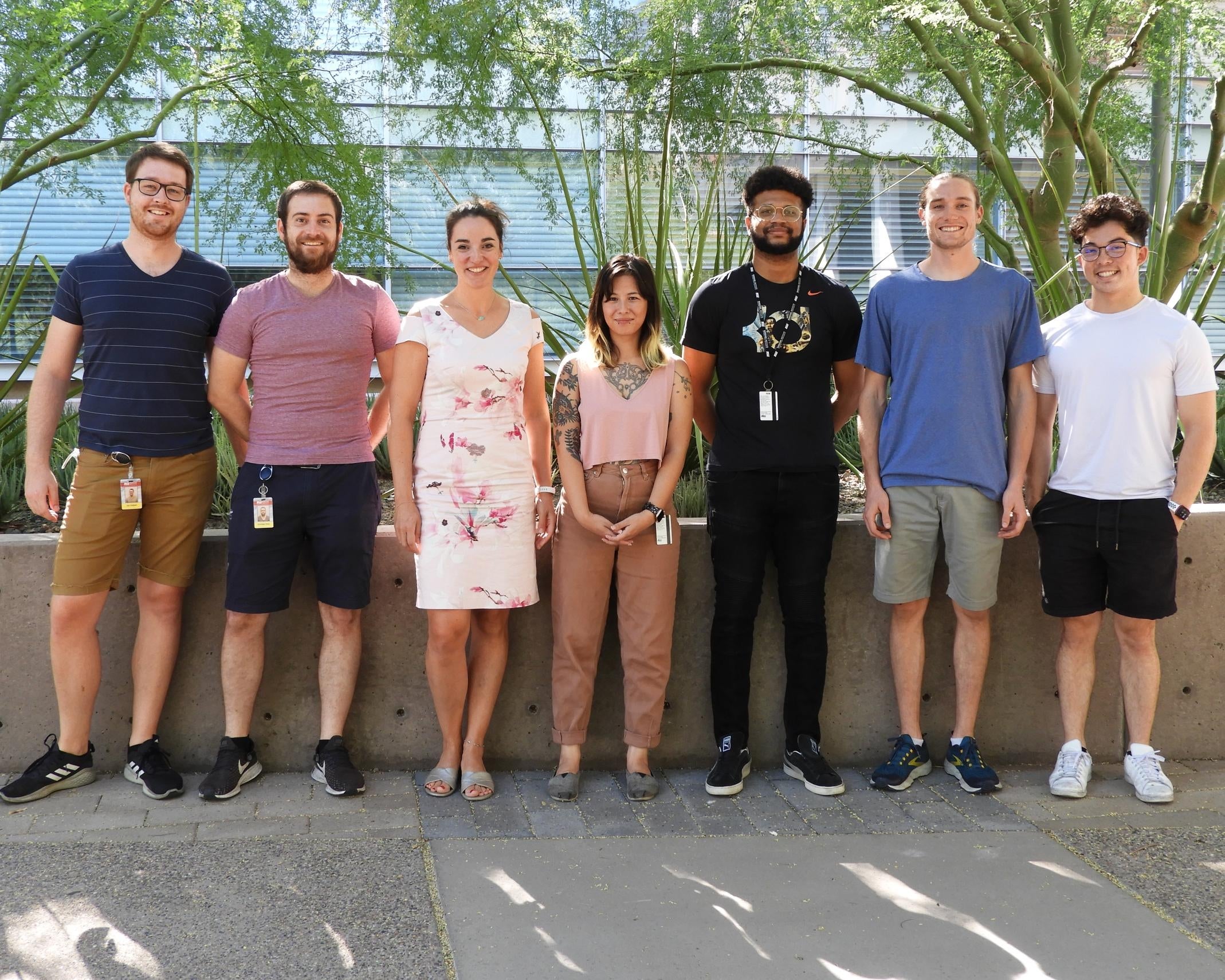ASU professor will synthesize new materials with NSF CAREER award

Christina Birkel is an inorganic chemist and an assistant professor in the School of Molecular Sciences at ASU. Photo by Mary Zhu/ASU
Assistant Professor Christina Birkel, an inorganic chemist from Arizona State University’s School of Molecular Sciences, has recently earned a Faculty Early Career Development (CAREER) award from the National Science Foundation.
Birkel and her group are diligently working to create new materials that can be used for renewable energy, catalysts and permanent magnets.
“I am very excited that our group has been selected for this award, and I am grateful to all team members who played an essential part in making this happen and to the National Science Foundation for funding our future projects around MAX phases and MXenes,” Birkel said.
Professor Tijana Rajh, director of the School of Molecular Sciences, which is part of The College of Liberal Arts and Sciences, said, “Christina Birkel and her group are doing extremely innovative molecular science, developing new solid-state materials. Our younger faculty members in the School of Molecular Sciences have an extraordinary record of achievement, and Professor Birkel is an exemplar in this regard.”
The prestigious CAREER program supports the early career development activities of teacher-scholars who most effectively integrate research and education within the mission of their organization. It provides five-year research grants to each recipient.
Making new materials
In this age of machine learning and data-driven research, a plethora of possible materials are being investigated, but synthesizing them in the lab, especially in the solid state, is often anything but straightforward.
Making new types of materials is at the heart of this award. Materials are all around us and are the driving force for new and innovative solid-state technologies centered on batteries, sensors and magnets.
The discovery of new and better materials, together with understanding their characteristics, such as their structure and properties, and how these factors can be tuned during their preparation are of utmost importance.
In this project, the Birkel group will focus on solid compounds that contain different metals and either carbon, nitrogen or both, called carbides, nitrides or carbonitrides, respectively. They offer a huge playground for the discovery of new types of materials with useful properties since they can (i) mix and match different elements, and (ii) produce them in different shapes.
Birkel started out years ago working on oxides and metallic chalcogenides, and recently her group has been very active in the field of carbides (so-called MAX phases). Solid-state microwave heating (using domestic and industrial ovens) is an excellent technique to focus on to synthesize carbides. Beautifully layered crystal structures are produced.
The Birkel group performs a lot of electron microscopy, X-ray diffraction and structural analysis on these materials. They are very special in that these materials can be exfoliated, that is, one layer of “A” elements in the structure (usually aluminum) can be etched out very selectively and you can end up with 2D materials (so-called MXenes). 2D materials are macroscopic in two dimensions and nanoscopic in the third. These materials have many potential applications.
Birkel is pushing their MAX phase research to make entirely new chemical compositions and shapes — for example, wires, spheres and hollow spheres. These compounds will have unique mechanical behaviors, such as self-healing at higher temperatures, as well as behaving in an interesting way magnetically.
Having hollow spheres, films and wires available paves the way for new uses of these materials. One can, for example, envision a way to integrate the wires into fabrics and produce wearable electronics that monitor sweat levels or produce energy on the go.
The Birkel group in the School of Molecular Sciences: (from left) Jan Paul Siebert, Andreas Reitz, Christina Birkel, Rose Snyder, Jordan Sinclair, John Jamboretz and Andrew Wasserbeck. Photo by Lauren Tackett/ASU
Furthermore, the team can break these layered solids down into atomically thin sheets, which are thinner than one-billionth of a meter. Reaching this size regime enables special physical phenomena that are not accessible in the larger structures. Different reactions can be catalyzed on their surfaces; for example, the production of hydrogen gas from water, which has big implications for renewable and cleaner energy production.
Where the 2D materials are concerned, it’s important to discover how the surface chemistry evolves during the exfoliation process. How can they manipulate the surface chemistry, and ultimately how does that influence the catalytic properties?
Future results from Birkel’s group are awaited, as they are utilizing powerful and innovative techniques for the production of many inorganic compounds despite the fact that there are many complications to solve along the way.
More Science and technology

Indigenous geneticists build unprecedented research community at ASU
When Krystal Tsosie (Diné) was an undergraduate at Arizona State University, there were no Indigenous faculty she could look to…

Pioneering professor of cultural evolution pens essays for leading academic journals
When Robert Boyd wrote his 1985 book “Culture and the Evolutionary Process,” cultural evolution was not considered a true…

Lucy's lasting legacy: Donald Johanson reflects on the discovery of a lifetime
Fifty years ago, in the dusty hills of Hadar, Ethiopia, a young paleoanthropologist, Donald Johanson, discovered what would…
